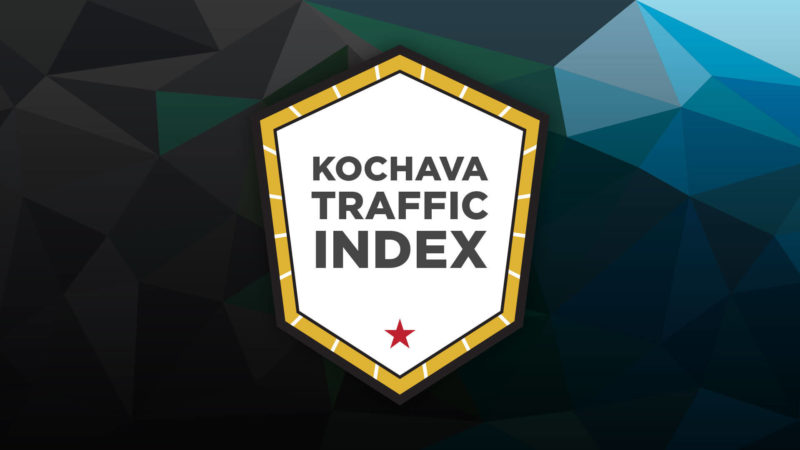Kochava launches its Traffic Index to spotlight top 20 mobile ad networks
The attribution and analytics firm says it is trying to encourage transparency and accuracy for the advertising universe outside Google and Facebook.

Attribution platform Kochava is out with its first ranking of the top 20 mobile ad networks, The Traffic Index, which it intends to make available quarterly. [Free; registration required.]
In order, its top 20 networks are:
- CrossInstall
- Pinsight
- LifeStreet
- Liftoff
- StartApp
- Moloco
- Leadbolt
- Unity Ads
- Manage
- AppLike
- Bing Ads
- Pandora
- Vungle
- Chartboost
- ironSource
- Fiksu
- Aarki
- InMobi
- Tapjoy
How the ranking was determined. The ranking is based on four metrics relating to ads that drive app installs, which is mostly what Kochava measures and assigns credit for.
They are signal clarity, fraud, quality and correlation (the statistical relationship between clicks and conversions) reported by the networks. Kochava integrates with 3000 or so mobile ad networks.
Signal clarity is the data surrounding clicks, impressions and postbacks. Head of Client Analytics Grant Simmons told me that networks sometimes only report clicks, for instance, and are less clear about related data, such as device ID, creative ID, transaction ID and so on. Postbacks are the data that Kochava returns to the network, relating to whether the ads led to app installs, and this data is used by networks for optimization.
The percent of fraudulent traffic is based on measurement via Kochava’s fraud console, and quality is how many active users the network retains. The number of active users, Simmons noted, thus relates to the quality of the ads and the inventory in a given network.
Other rankings. Simmons pointed to two other rankings of mobile ad networks, by attribution firms Appsflyer and Tune, although the latter’s attribution business is now owned by deep linking firm Branch. The difference in the rankings, he said, is that Kochava puts more emphasis on signal clarity, and thus on the quality of correlation between click and install.
Why this matters to marketers. “This [ranking] is an effort to clear up this industry,” Simmons said, adding that it is “remarkably fraudulent.”
By encouraging mobile ad networks to up the quality and transparency of their reporting, he said, his company is hoping to give a boost to the vitality of mobile advertising outside the dominating duopoly of Google and Facebook. Marketers can use this kind of evaluation to determine which networks qualify for their business, and, in that way, help to encourage the trend toward transparency.
Contributing authors are invited to create content for MarTech and are chosen for their expertise and contribution to the search community. Our contributors work under the oversight of the editorial staff and contributions are checked for quality and relevance to our readers. MarTech is owned by Semrush. Contributor was not asked to make any direct or indirect mentions of Semrush. The opinions they express are their own.
Related stories